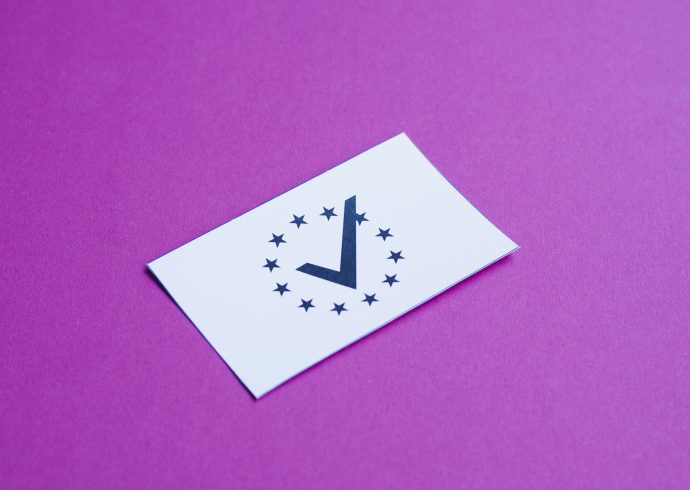From Degrees to Digital Badges: The Future of Verifiable Academic Accreditation
GCAF Press
June 25, 2025
Assessing the global shift from traditional degree validation to blockchain-backed micro-credentials — and how accreditation bodies are evolving to validate lifelong learning.
The traditional model of academic accreditation — anchored in formal degrees, institutional prestige, and paper-based verification — is undergoing a profound transformation. As global labor markets become more skill-specific, digitally driven, and mobility-focused, both learners and employers are demanding more agile, modular, and verifiable forms of recognition.
Enter digital badges, micro-credentials, and blockchain-verified academic records. These innovations are challenging the once-unquestioned dominance of diplomas and transcripts, and are pushing accreditation bodies worldwide to evolve — not just in how they assess institutions, but how they validate knowledge itself.
This article explores how the future of academic accreditation will be shaped by:
The rise of modular, skill-based credentialing;
The need for cross-border interoperability;
The demand for real-time verification;
And the role of meta-accreditation bodies like GCAF in ensuring trust without bureaucratic drag.
Section 1: Why the Traditional Model Is Breaking
1.1 Diploma ≠ Competency
A growing number of employers report that traditional degrees often fail to guarantee:
Job-readiness
Specific technical competencies
Soft skills like collaboration, digital fluency, or adaptability
1.2 Institutions Lag Behind Market Needs
While innovation in education delivery (e-learning, bootcamps, hybrid models) has accelerated, formal accreditation processes remain slow, heavily paper-based, and misaligned with modular credentials.
1.3 The Trust Gap in Global Recognition
Many learners, especially from the Global South, face delays and doubts in credential recognition when seeking employment or further education abroad. This is often due to:
Lack of common quality frameworks
Fraudulent credentials in circulation
Inaccessible verification mechanisms
Section 2: Rise of Digital Credentials & Micro-Achievements
2.1 What Is a Digital Badge?
A digital badge is a verifiable, portable credential that contains metadata describing:
The issuing institution
The skills or knowledge demonstrated
Evidence of performance or assessment
Expiry date or recertification status
These are often hosted on secure, blockchain-based registries, allowing real-time verification by employers, licensing bodies, and academic institutions.
2.2 The Micro-Credential Movement
Global universities and platforms like Coursera, edX, and FutureLearn now offer stackable, short-form programs in areas such as:
Data science
Sustainability
AI ethics
Cybersecurity
These credentials allow learners to build specialized skill portfolios without committing to multi-year degree paths.
Section 3: International Bodies Responding to the Shift
| Organization | Key Action |
|---|---|
| UNESCO | Launched the Global Convention on Higher Education Recognition, explicitly mentioning digital credentialing |
| OECD | Advocates for modular, cross-border recognition frameworks |
| EU Commission | Developed the European Digital Credentials Infrastructure (EDCI) and Europass for learner mobility |
| IMS Global Learning Consortium | Built the Open Badges 2.0 standard, now a reference globally |
| World Bank & IFC | Funding national-level pilots for verifiable skills credentials in emerging economies |
Section 4: Implications for Accreditation Bodies
4.1 Verifying at the Credential Level
Traditional accreditors certify institutions or programs. But now, they must consider:
Accrediting specific badges or micro-credentials
Verifying assessment integrity at the module level
Monitoring issuance and revocation controls
This demands a shift toward decentralized, API-enabled oversight.
4.2 Continuous vs. One-Time Accreditation
In the badge ecosystem, credentials are:
Issued more frequently
Updated more dynamically
Subject to revocation or expiration
Accreditation bodies must move from once-every-5-years reviews to real-time or periodic audits of badge issuance systems and evaluation rubrics.
Section 5: The Role of Digital Trust Infrastructure
5.1 Blockchain for Integrity
Credentialing platforms such as:
Learning Machine (Hyland)
Credly / Pearson Acclaim
OpenCerts
TrueCred
now issue blockchain-anchored badges, with immutable verification trails.
GCAF and its partners must validate the technical and governance controls of these platforms as part of the accreditation pipeline.
5.2 Interoperability Across Jurisdictions
To support learners moving across borders:
Badges must be mapped to national qualification frameworks (NQFs)
Accreditation metadata must align with models like EQF, AQF, or TQF
GCAF can act as a translator and validator between frameworks, providing cross-jurisdictional reference indices.
Section 6: Who Accredits the Issuers?
Many micro-credentials are issued by:
Private companies
Bootcamps
NGOs
EdTech startups
Few of these are accredited in the traditional sense. This raises concerns about:
Quality control
Bias
Assessment rigor
Accreditation must extend to non-traditional issuers, or risk losing the public trust that formal degrees still carry.
Section 7: Opportunities for Innovation in Accreditation
7.1 Real-Time Performance Feedback
Imagine an accreditation system where:
Learner outcomes are tracked via employer feedback.
Drop-off and completion rates trigger review.
Credential misuse or fraud is flagged by third parties.
This kind of live analytics accreditation is already being piloted in fintech and cybersecurity training domains.
7.2 AI-Assisted Credential Review
AI can help accreditors:
Scan badge metadata at scale
Detect anomalies in credential issuance volume or timing
Match curriculum to international standards libraries
This enhances efficiency and objectivity in the review process.
Conclusion: From Institutions to Individuals
The future of accreditation is moving from certifying places (universities, training centers) to validating people and products (learners, platforms, credentials).
But as credentials become more portable and abundant, their value hinges on verifiability, relevance, and trust. GCAF and similar institutions must build frameworks that:
Recognize the legitimacy of new credential formats
Maintain quality assurance without stifling innovation
Anchor learning outcomes to global interoperability
Degrees still matter — but in the age of digital skills, the ability to verify specific competencies instantly and credibly matters more.


